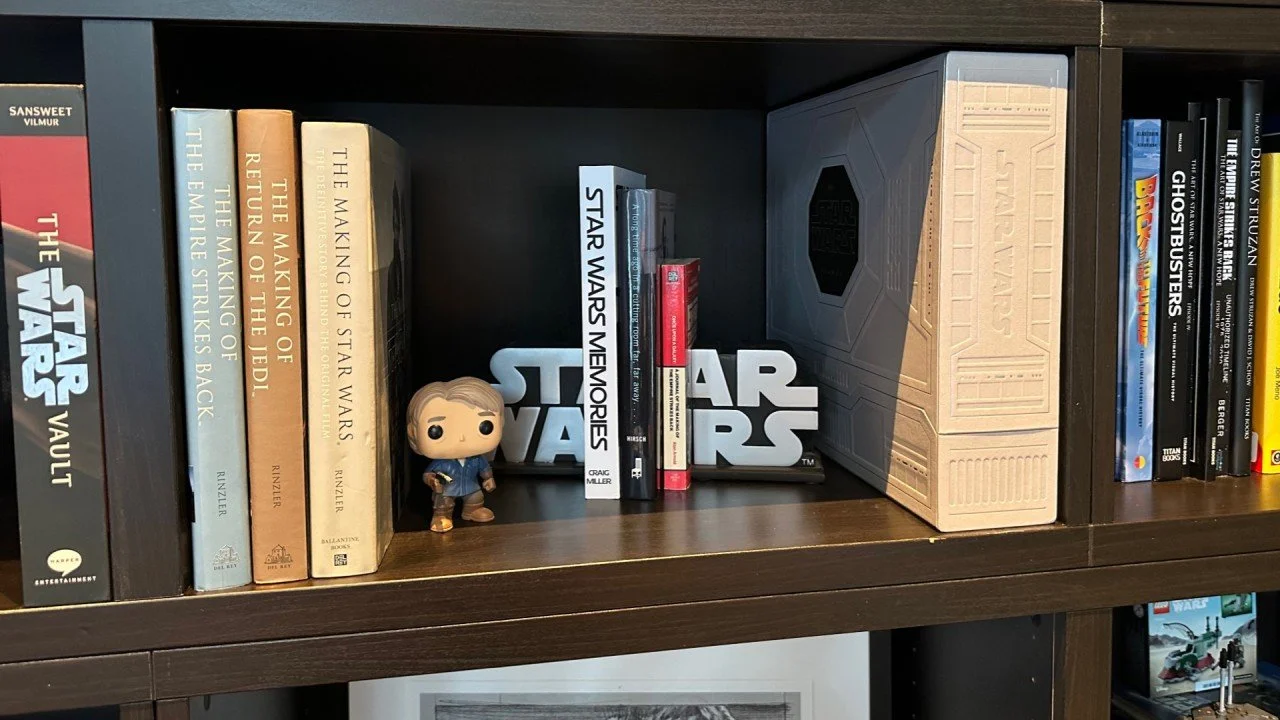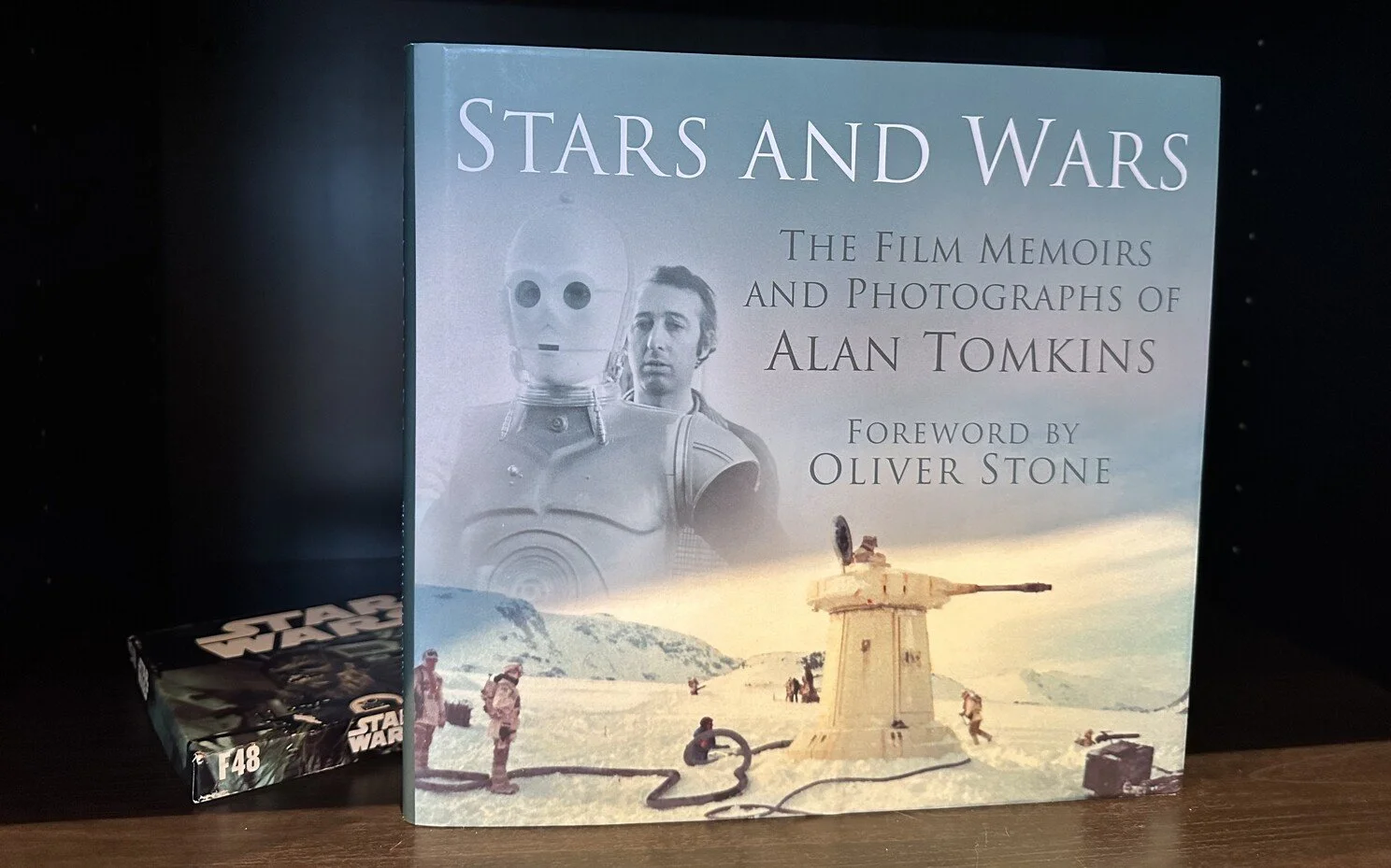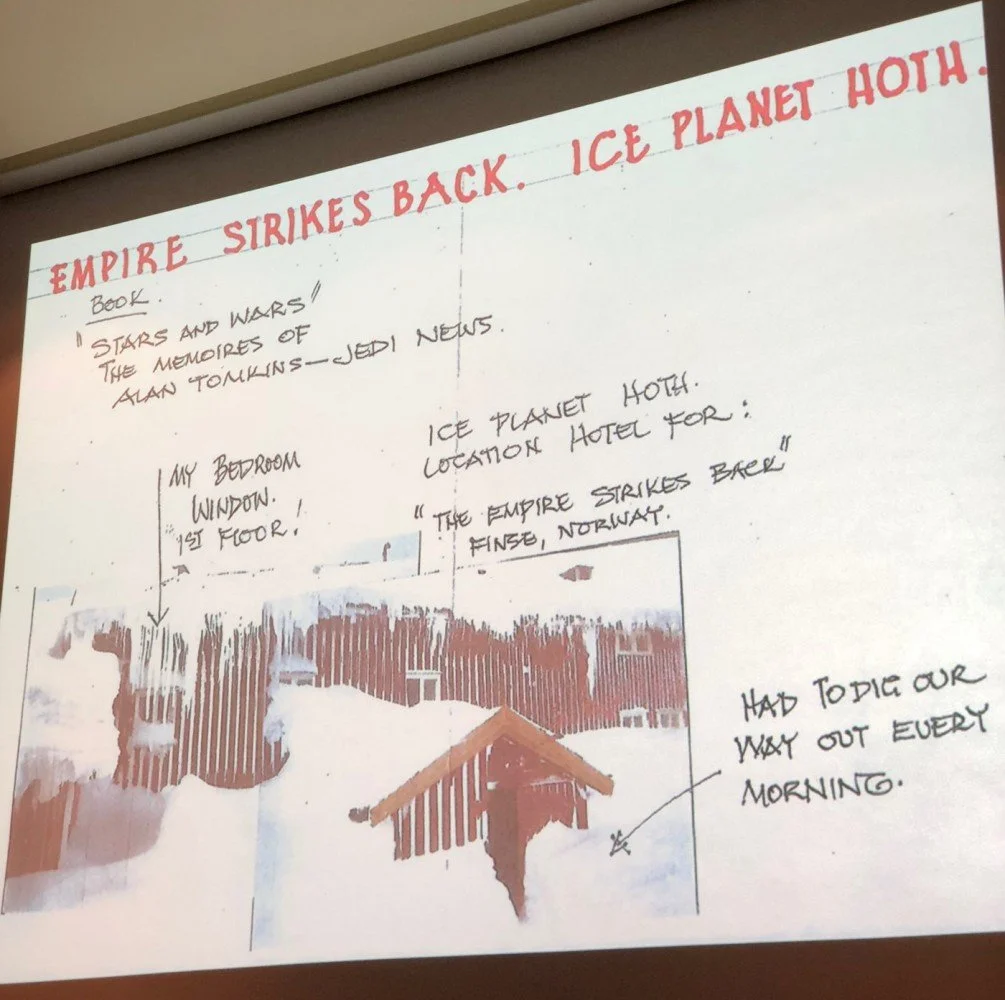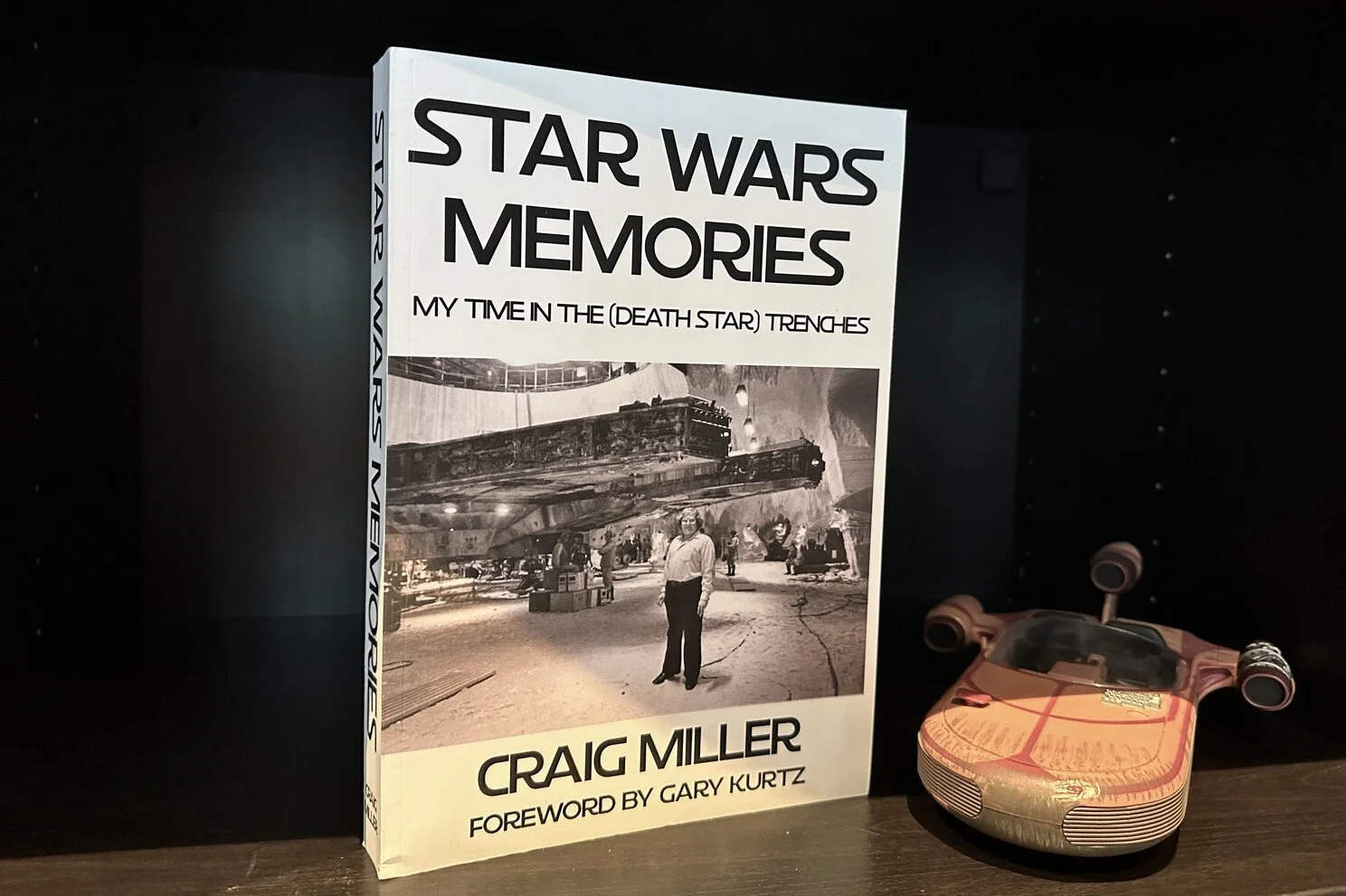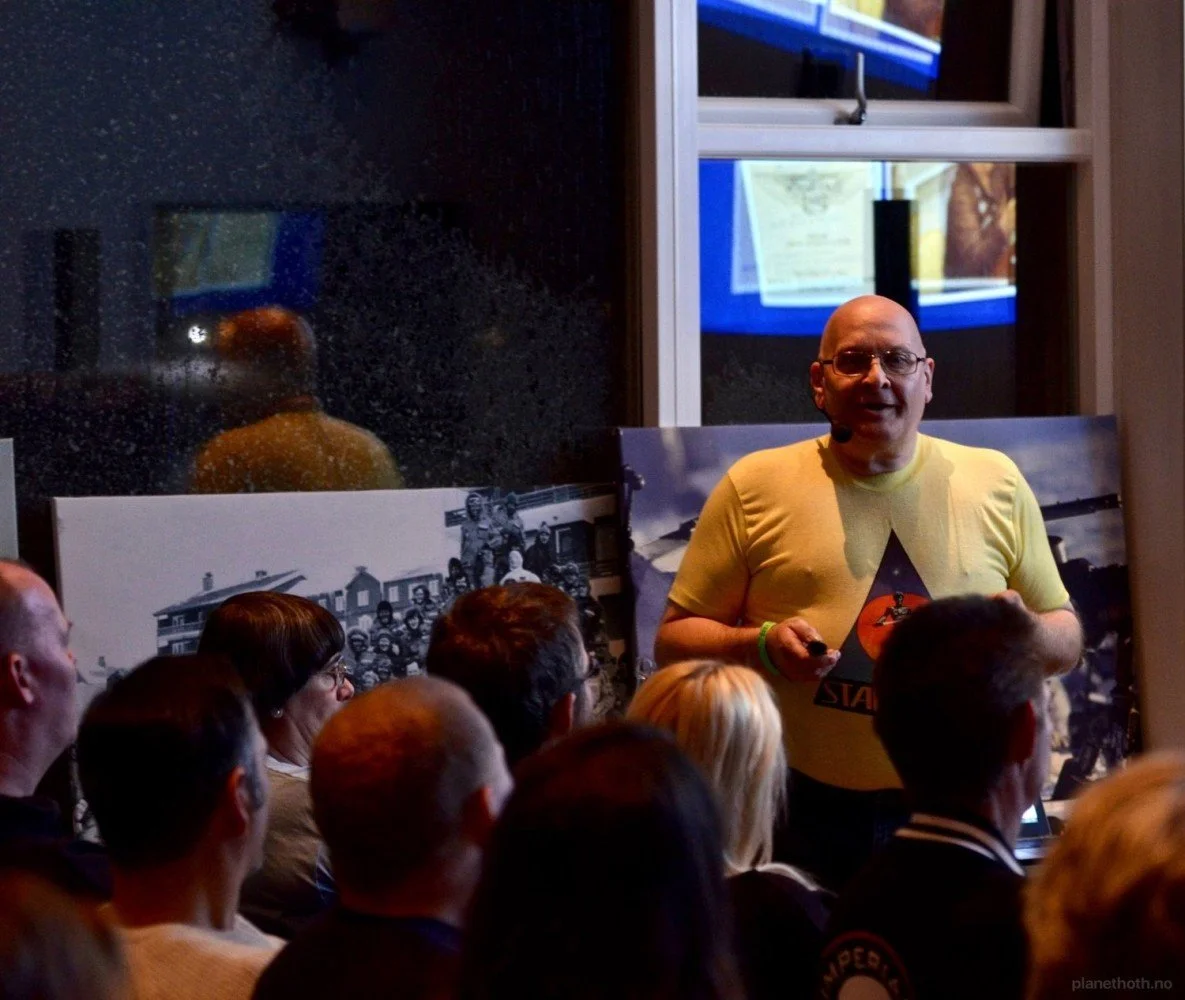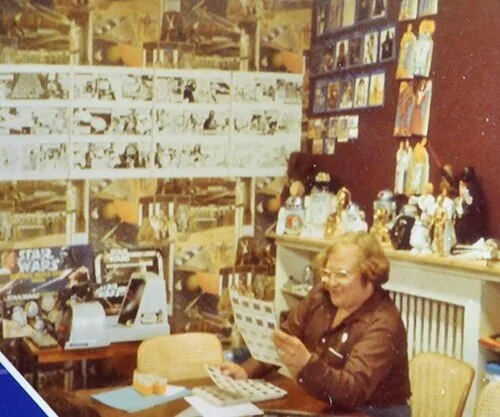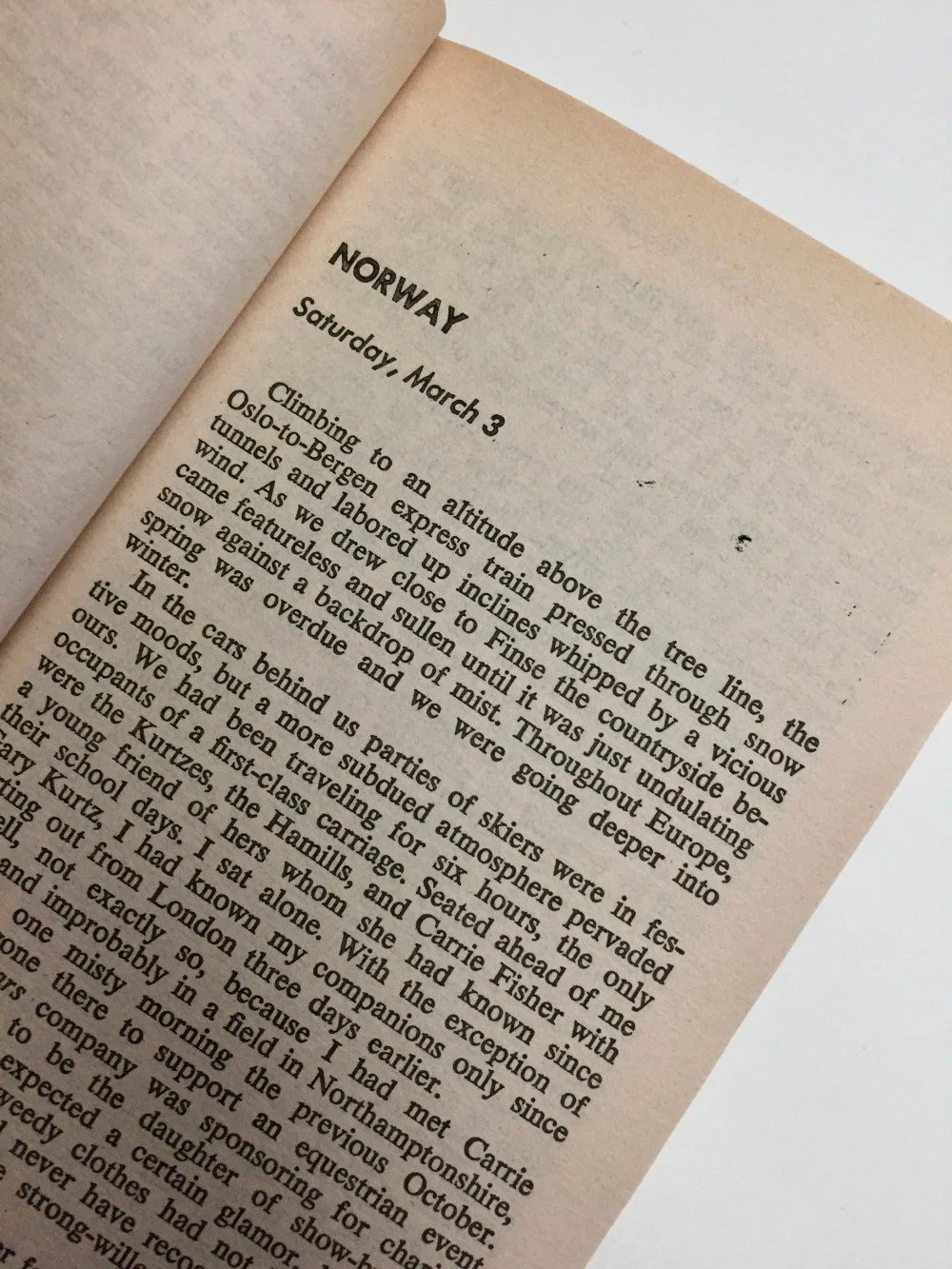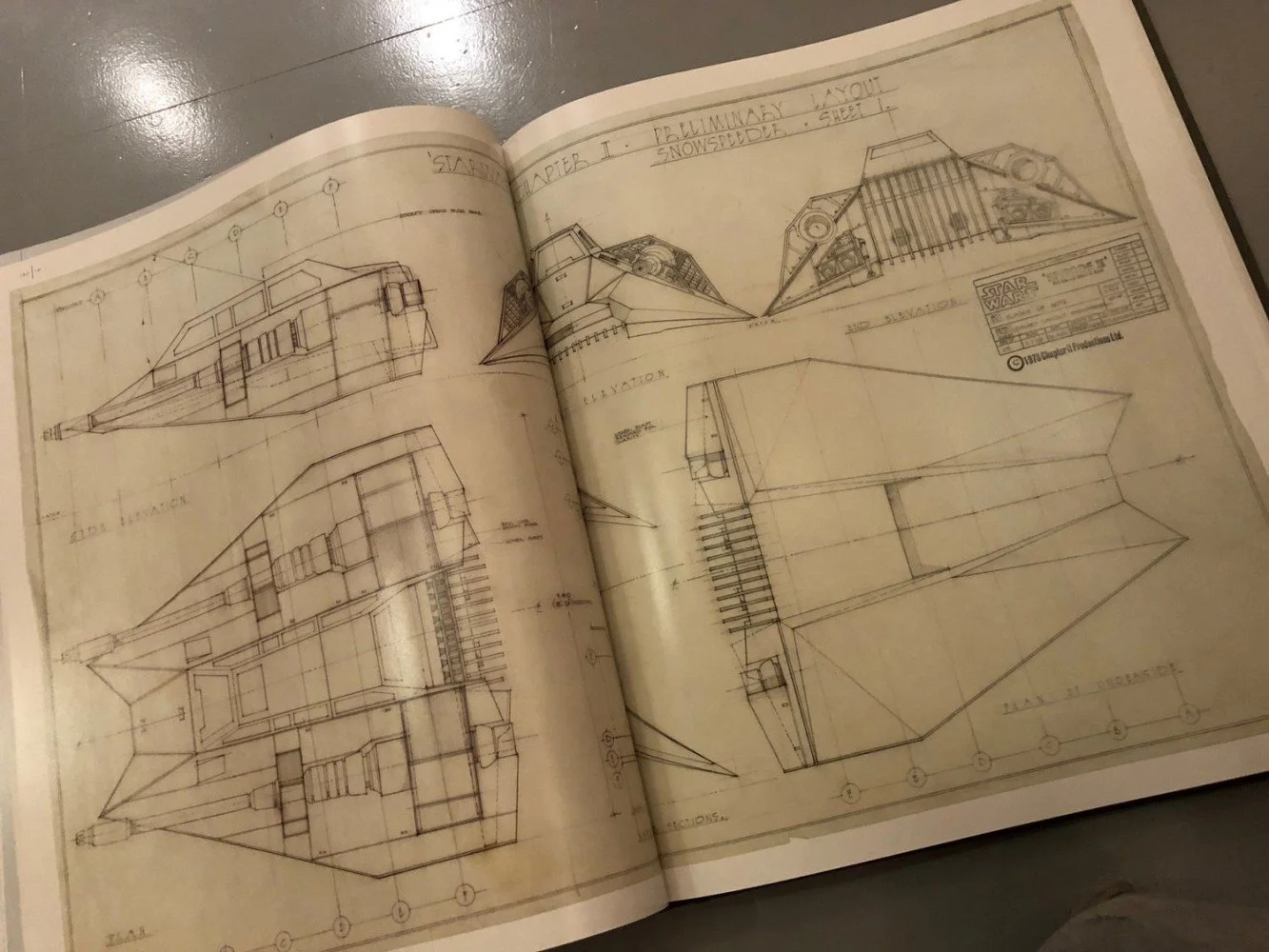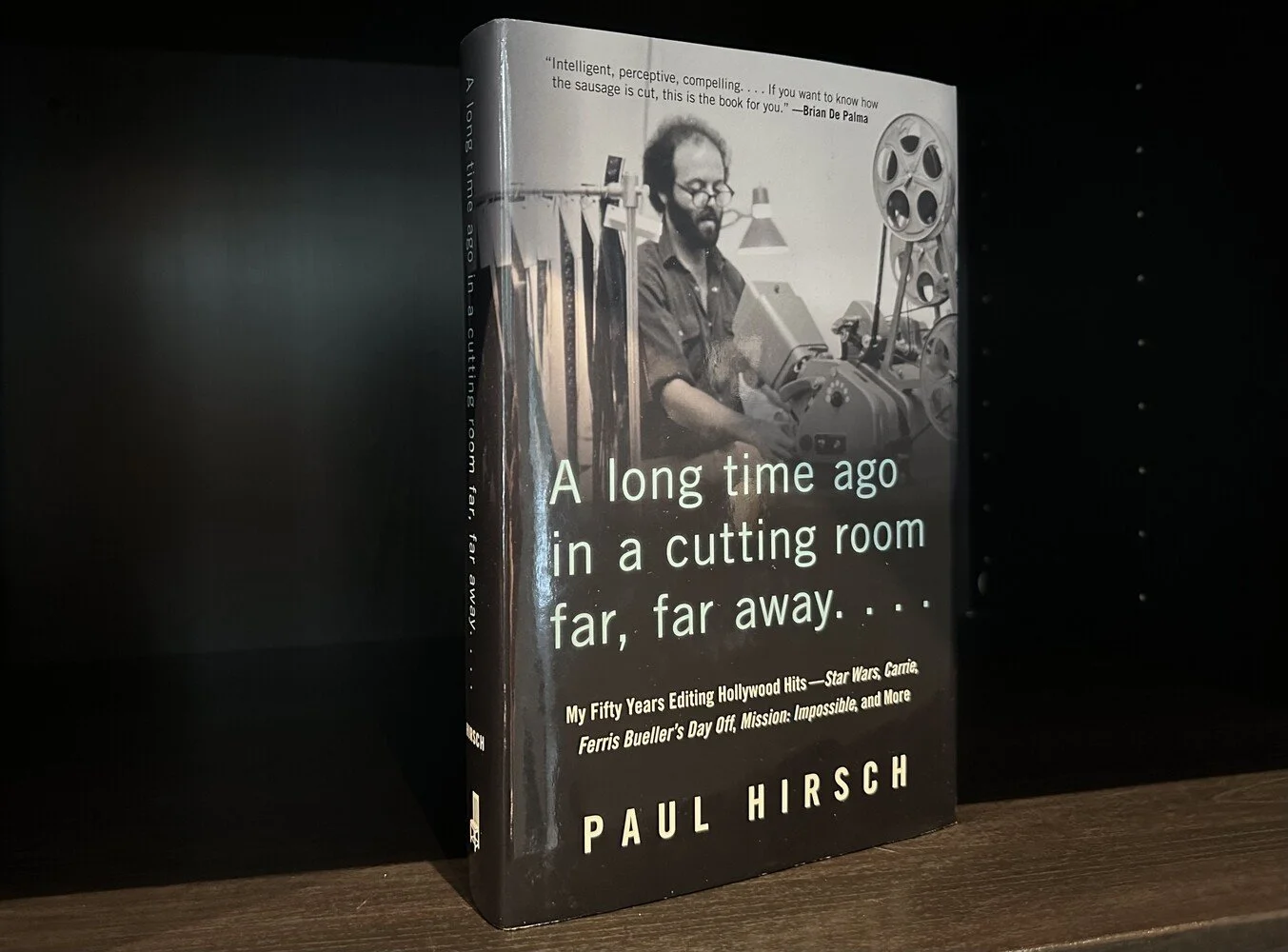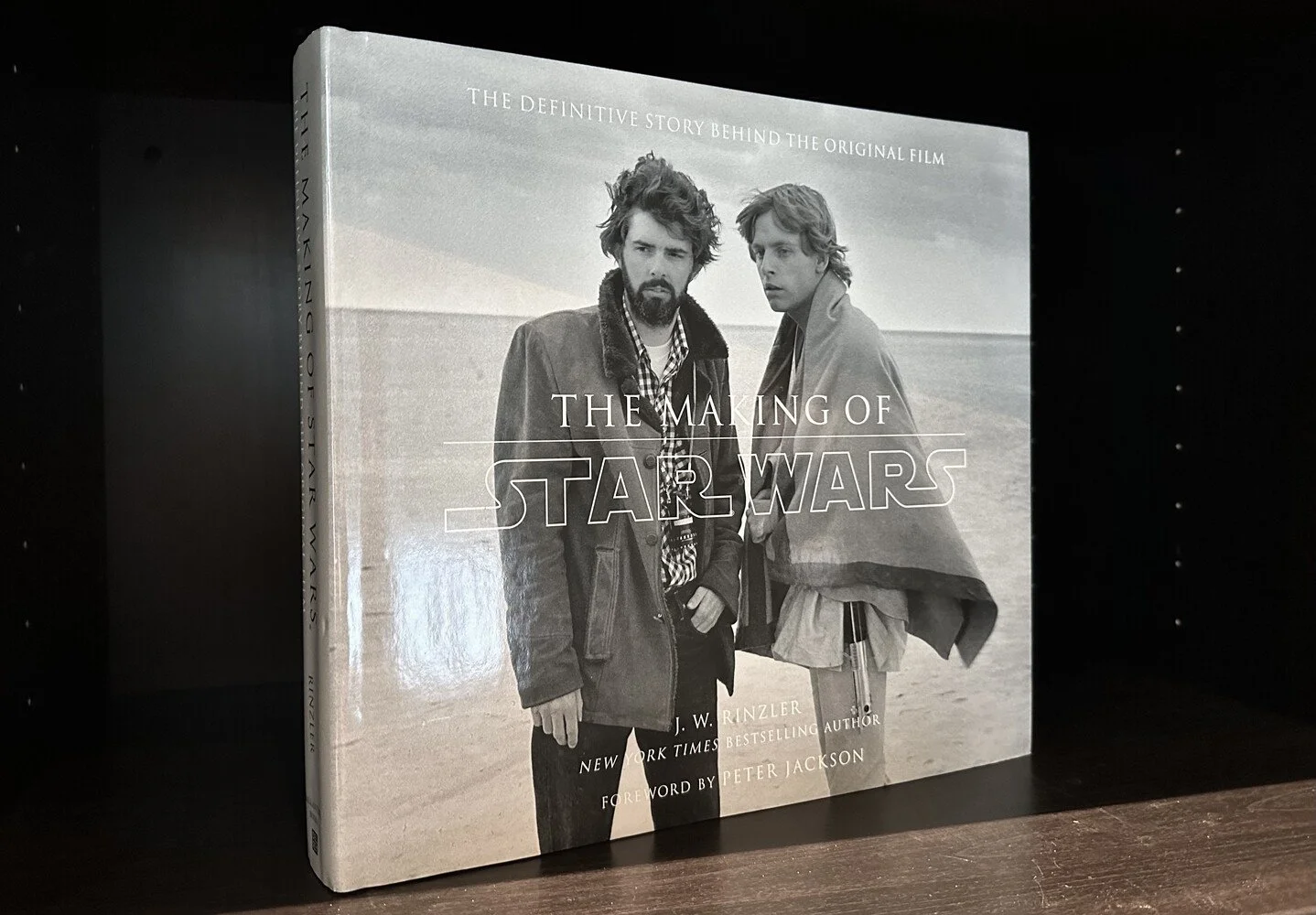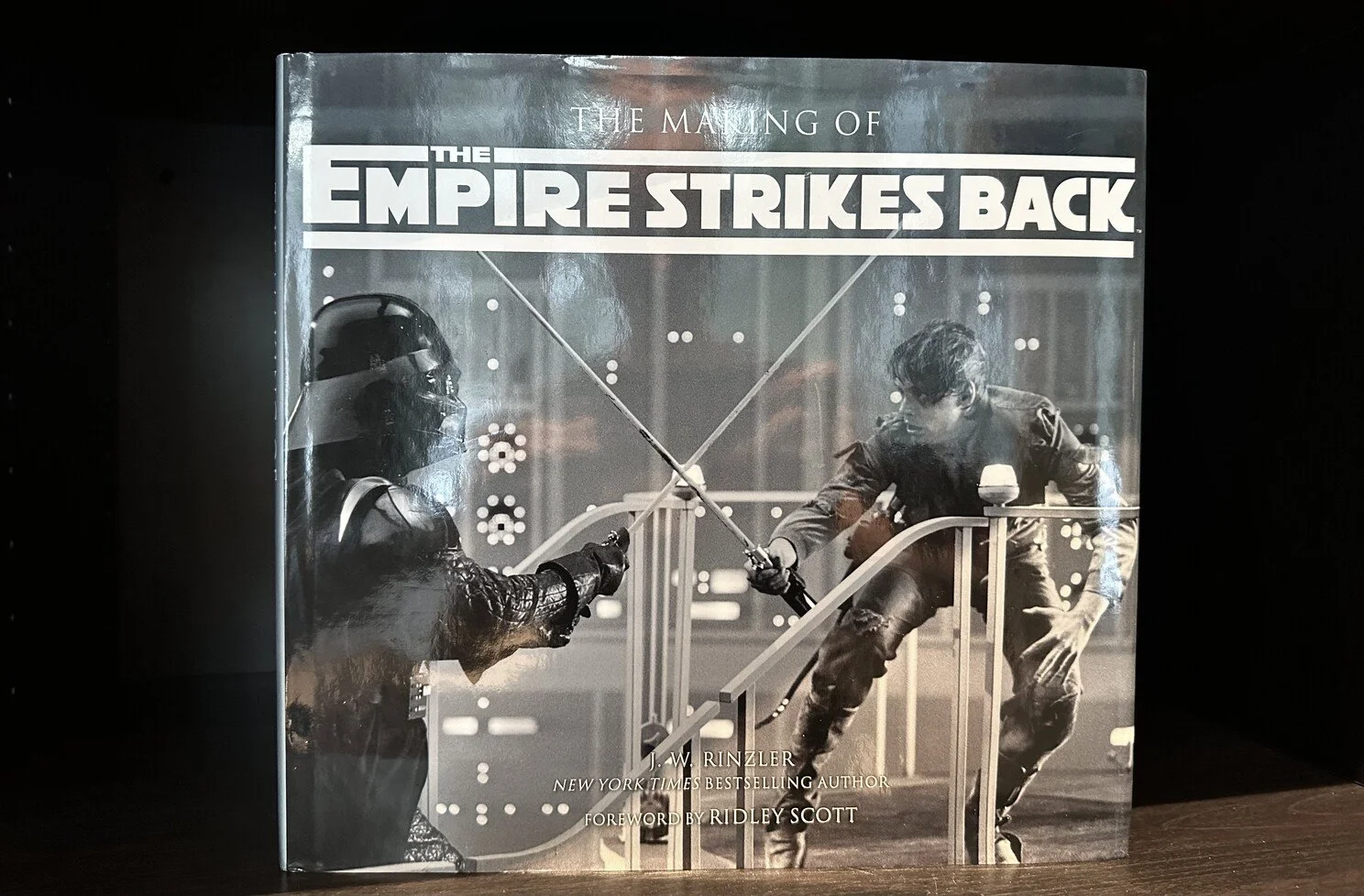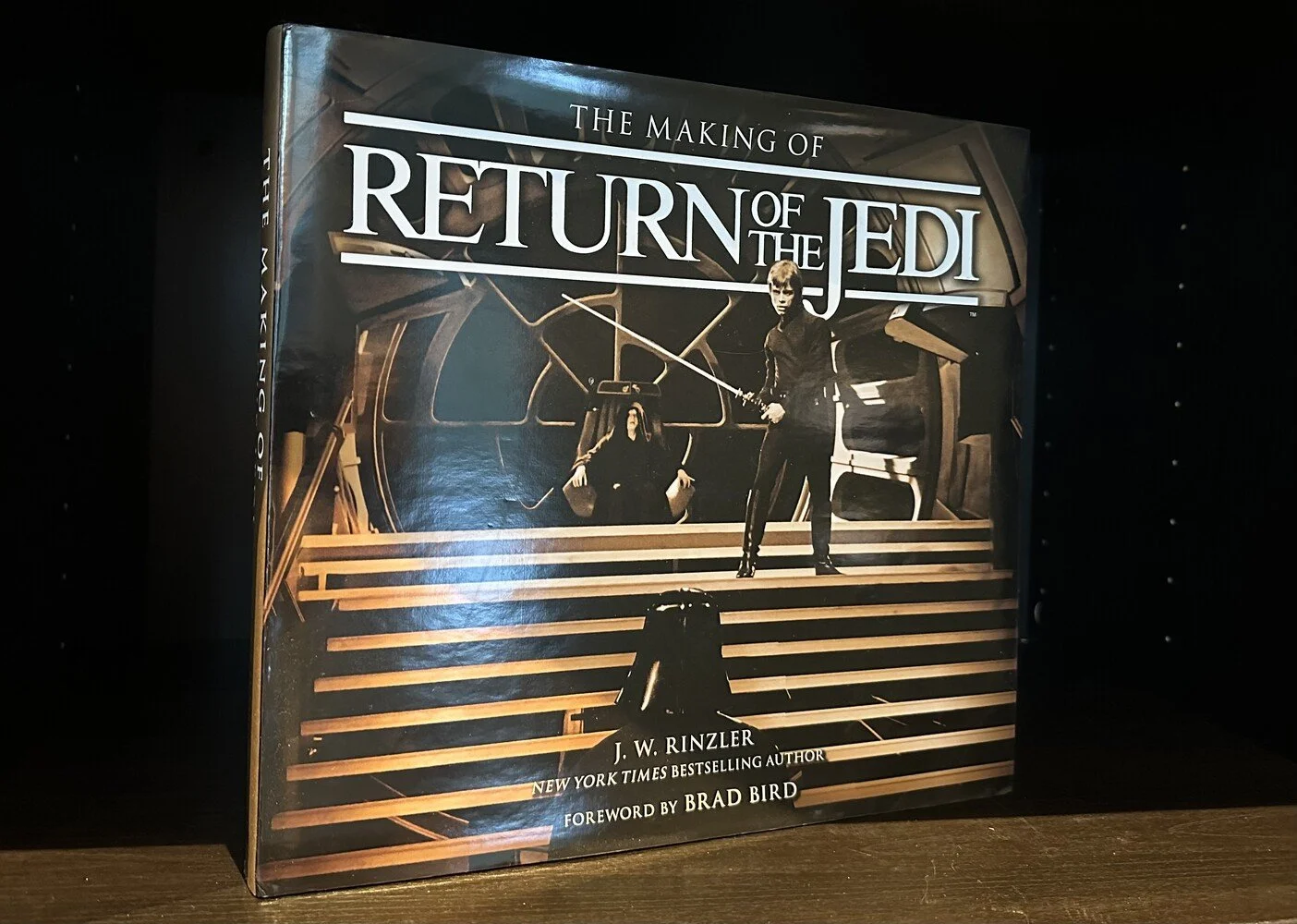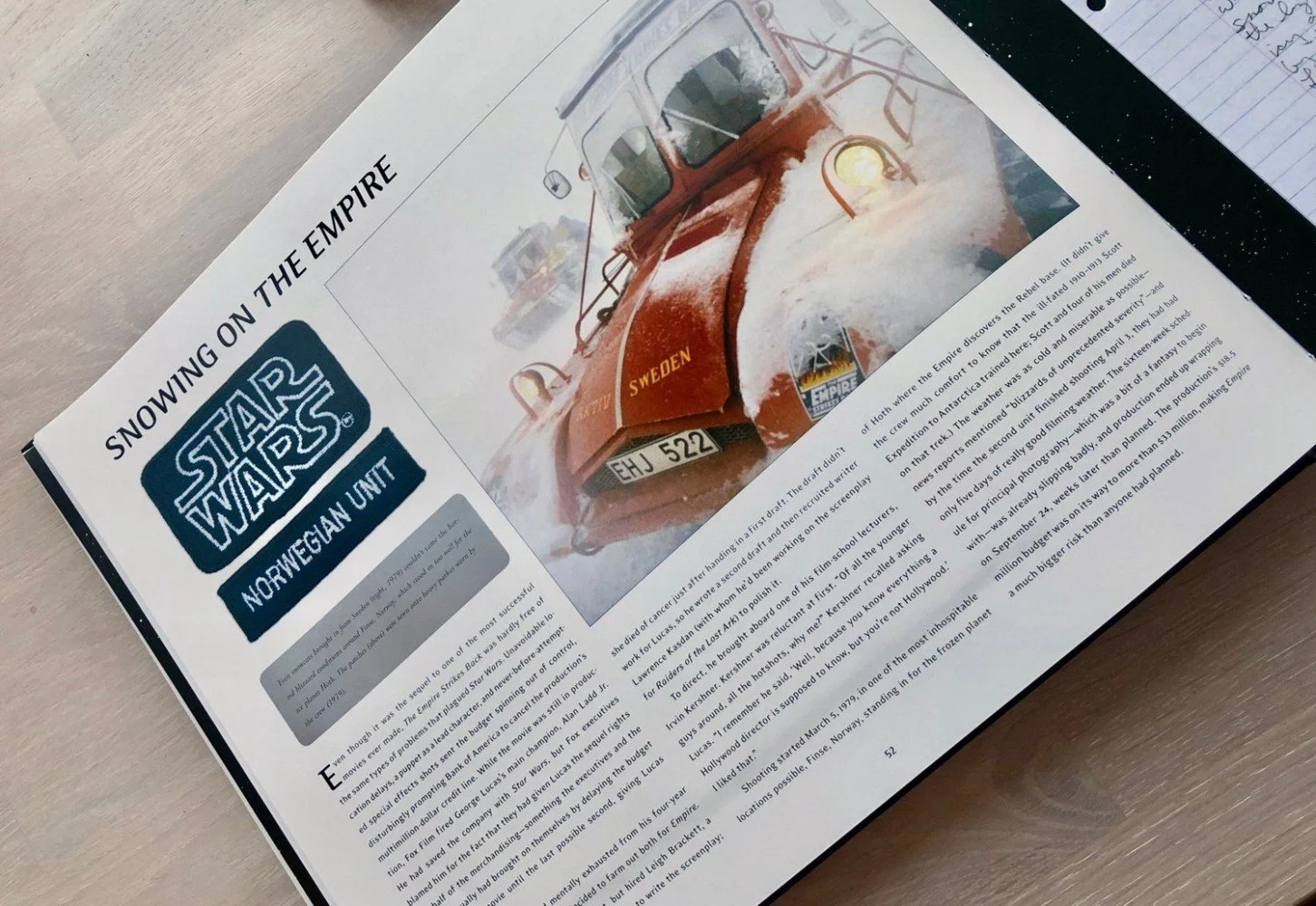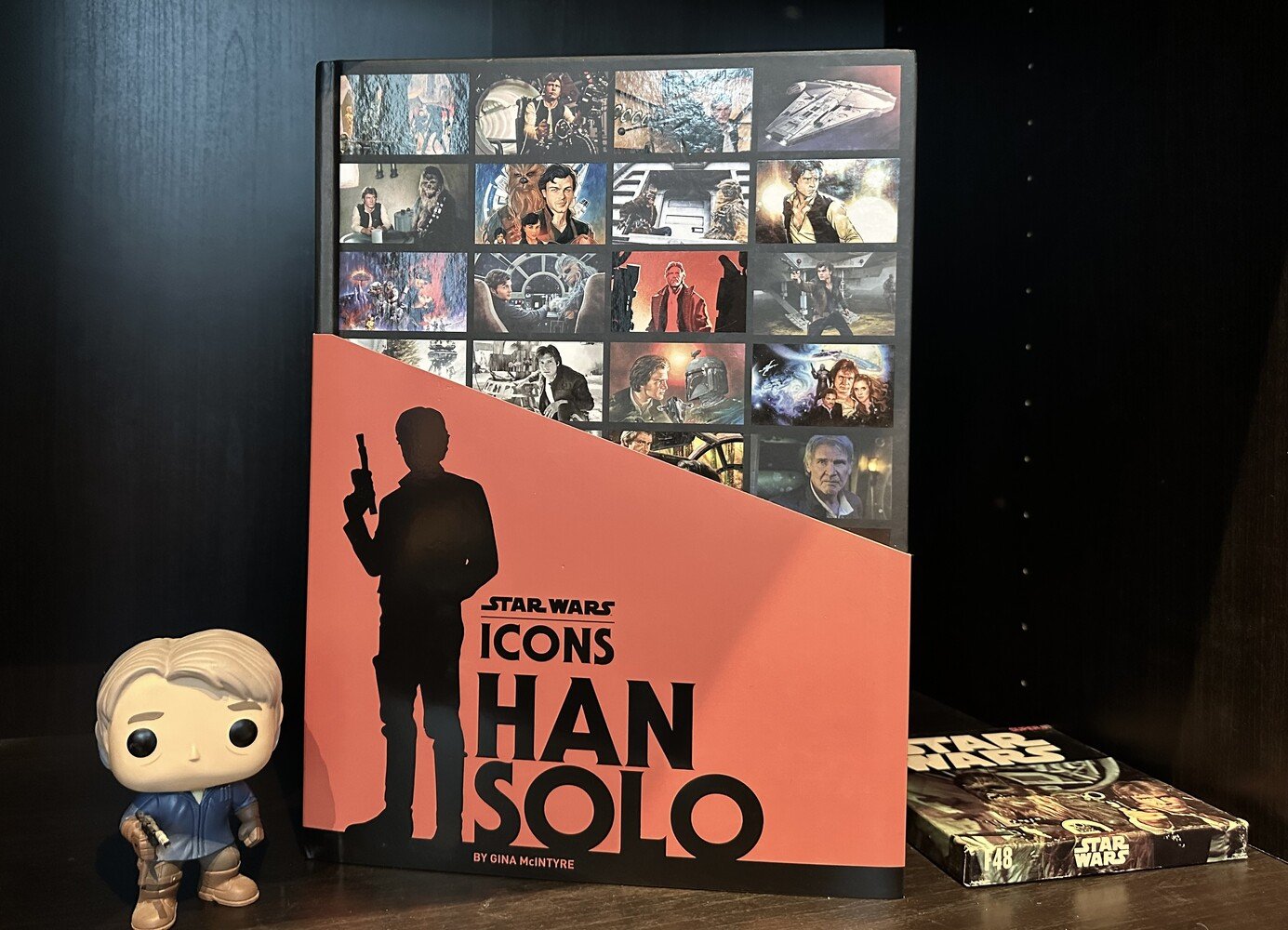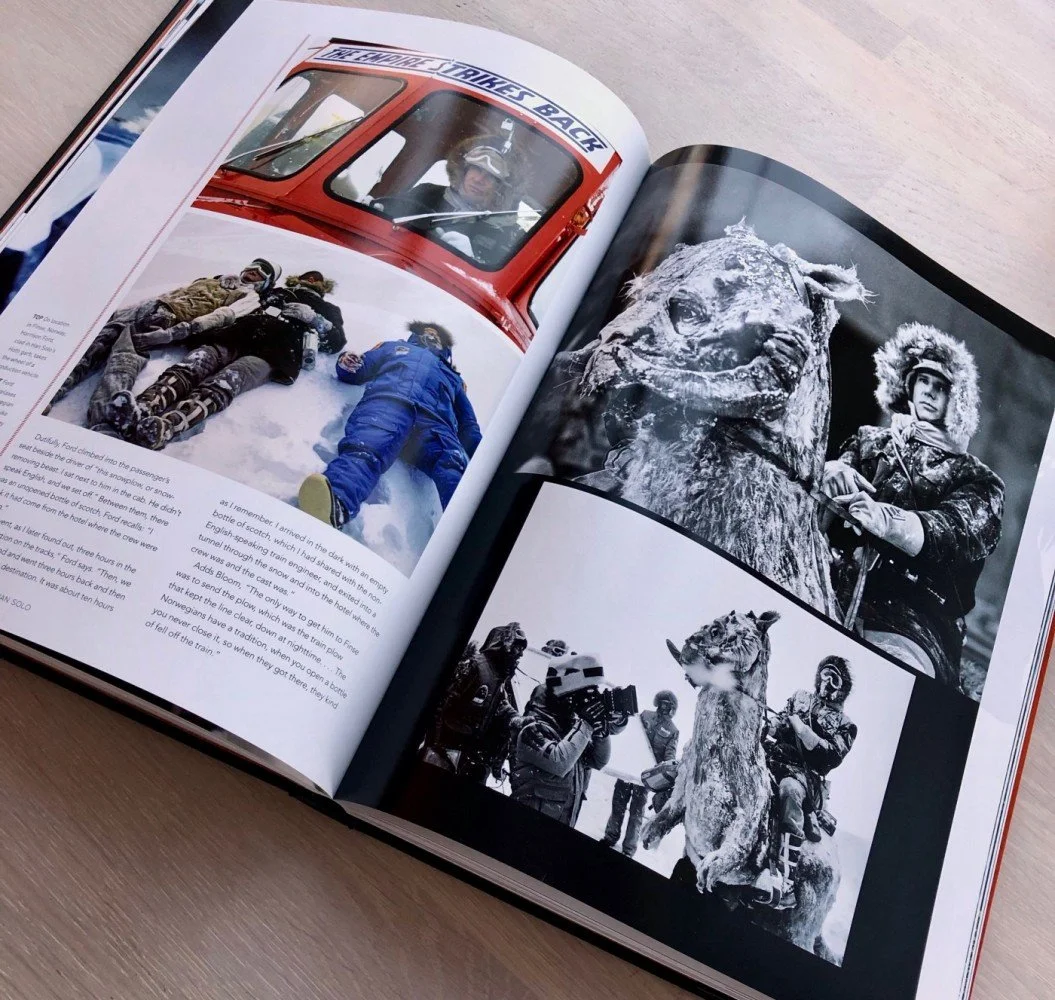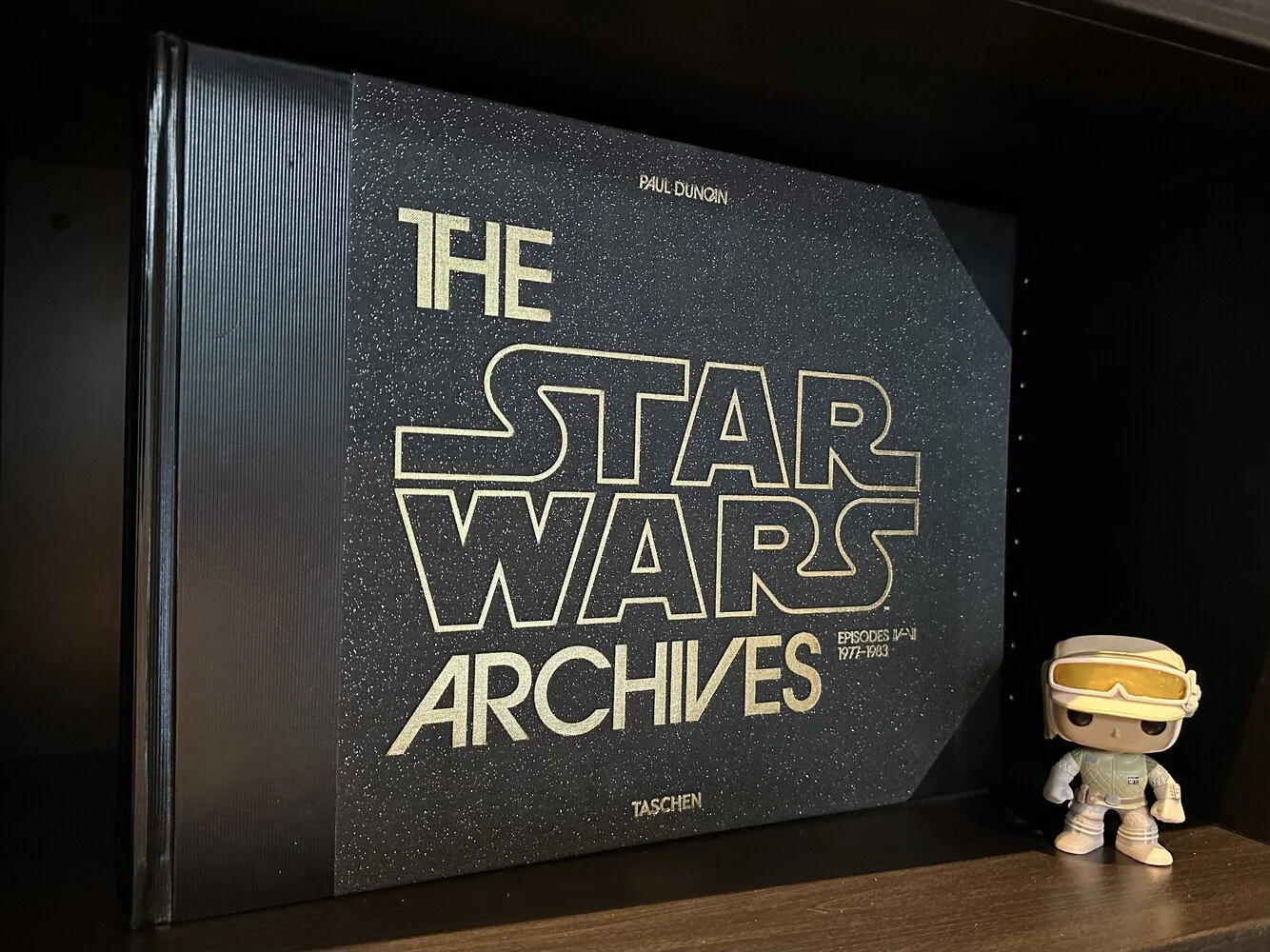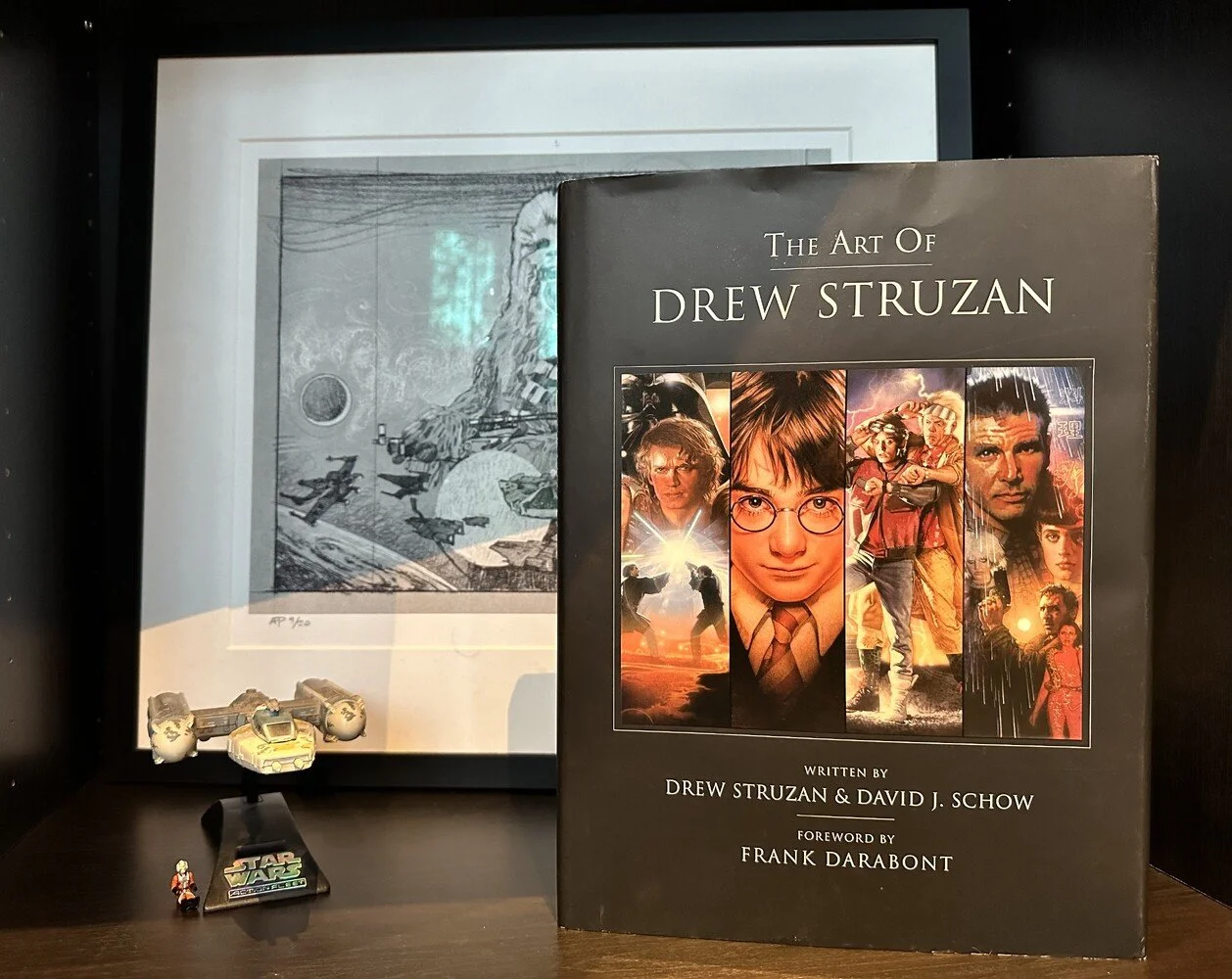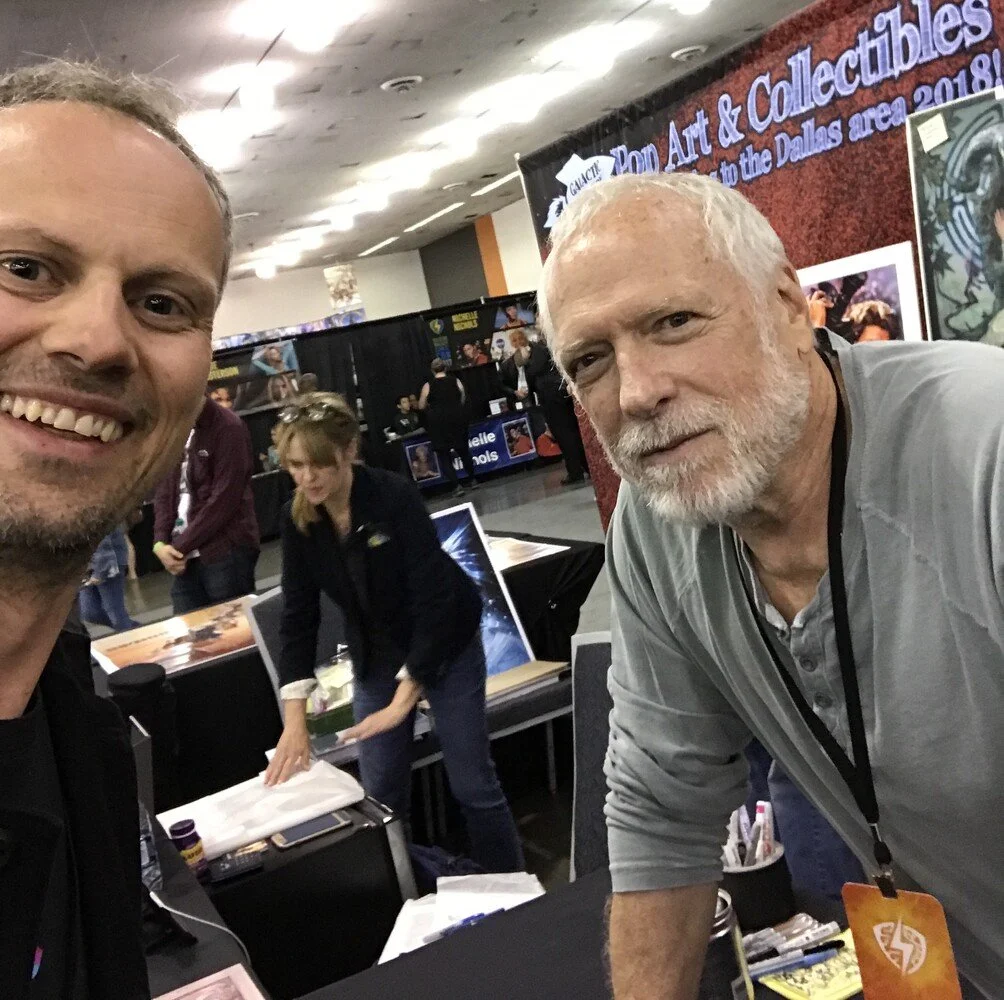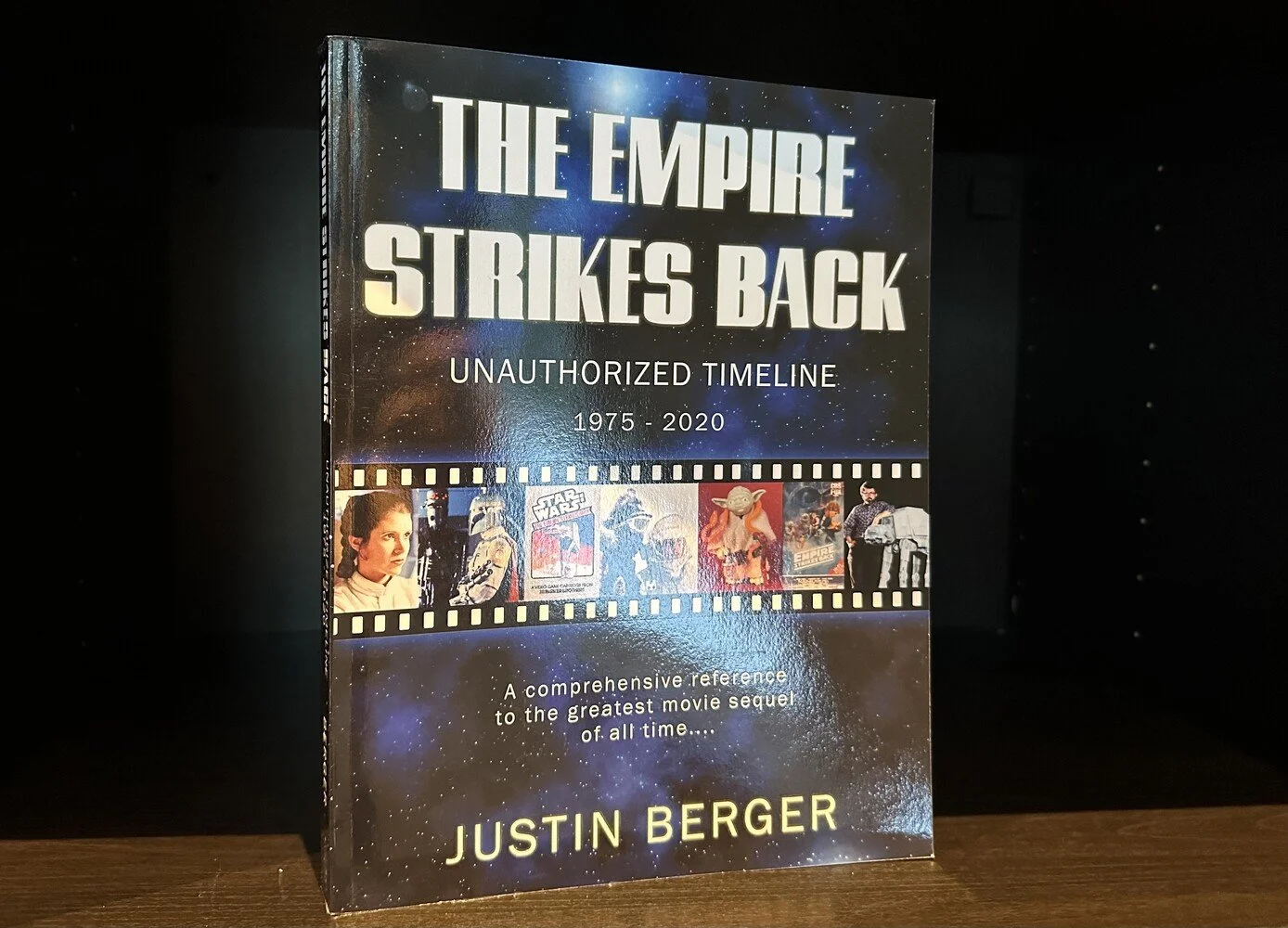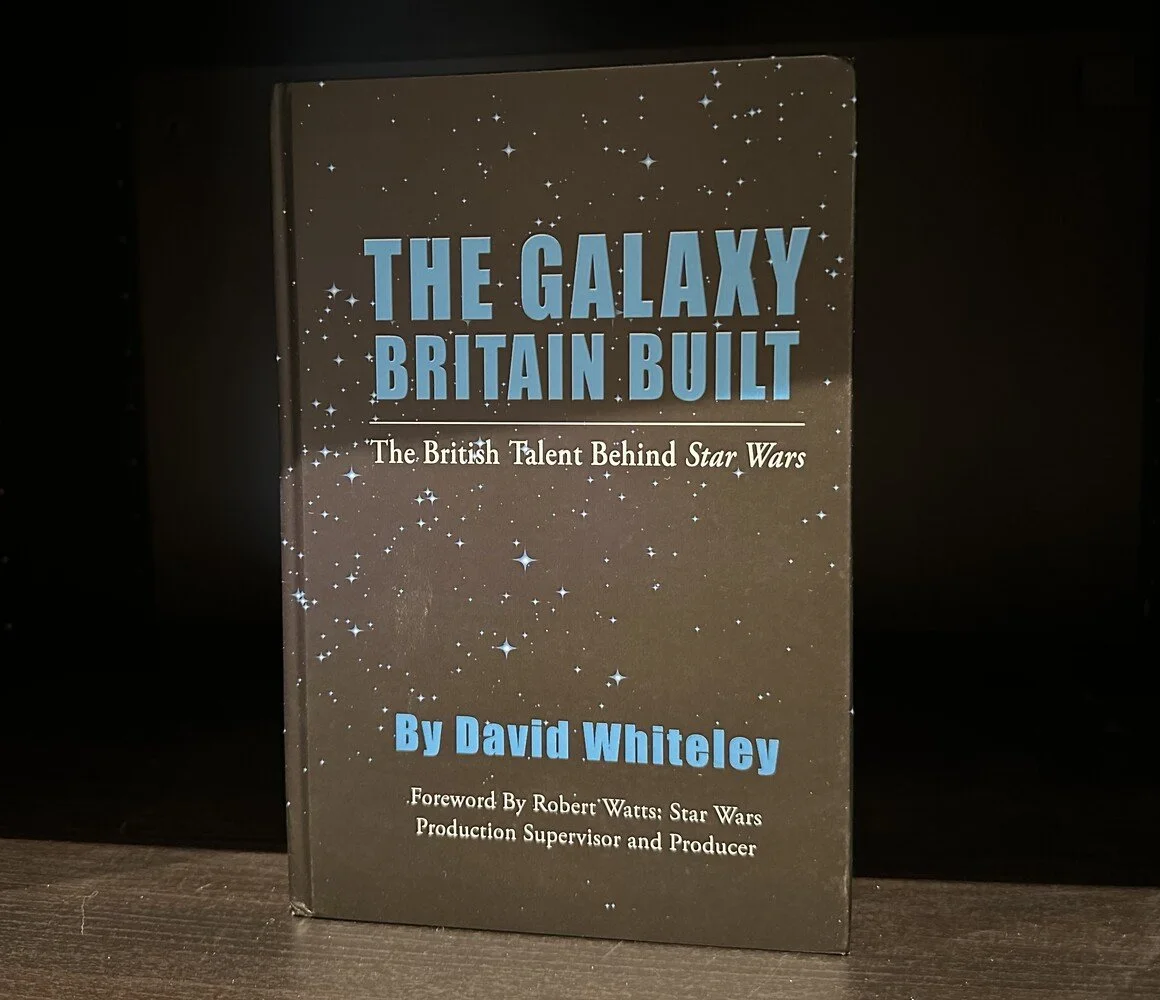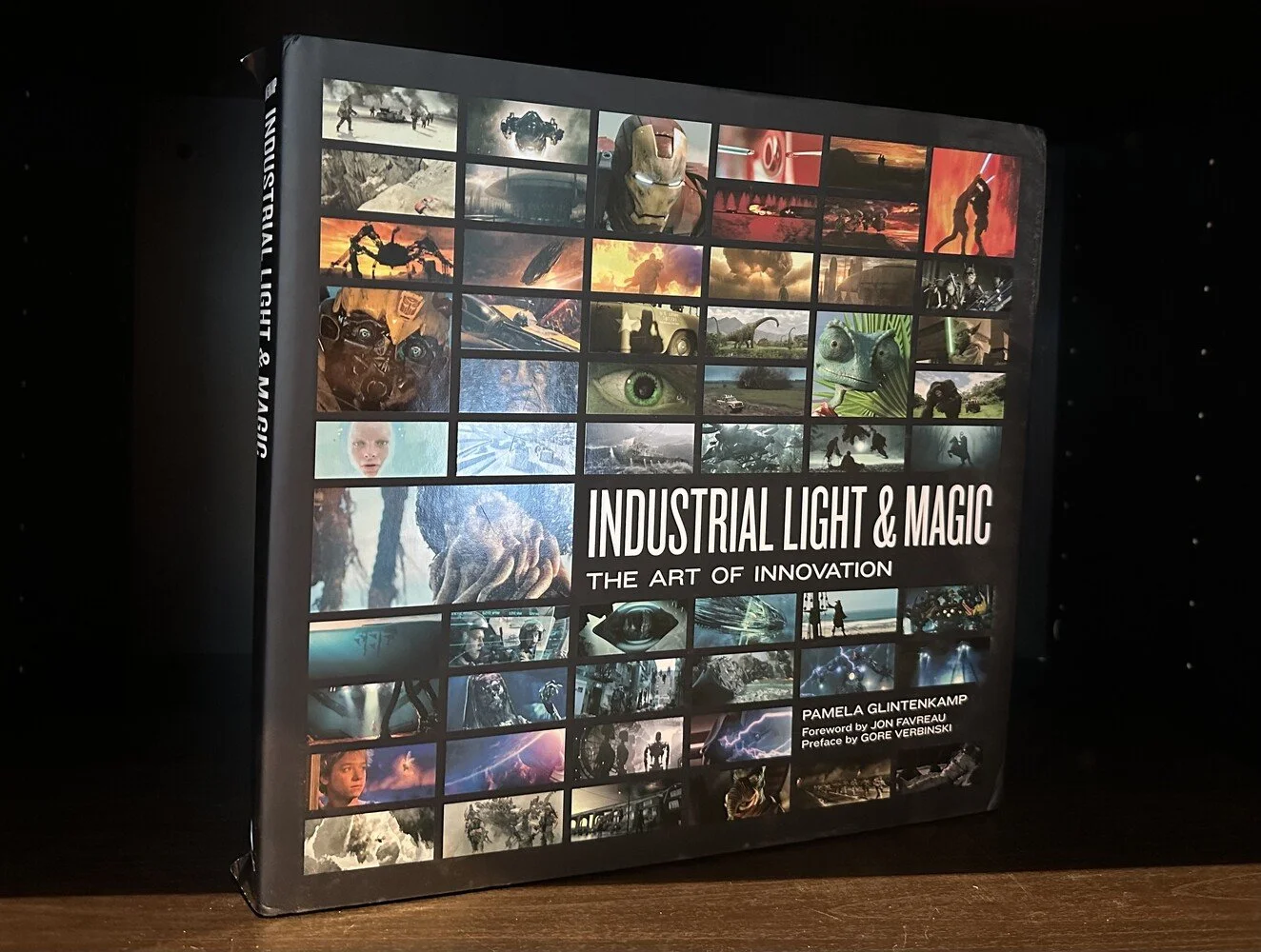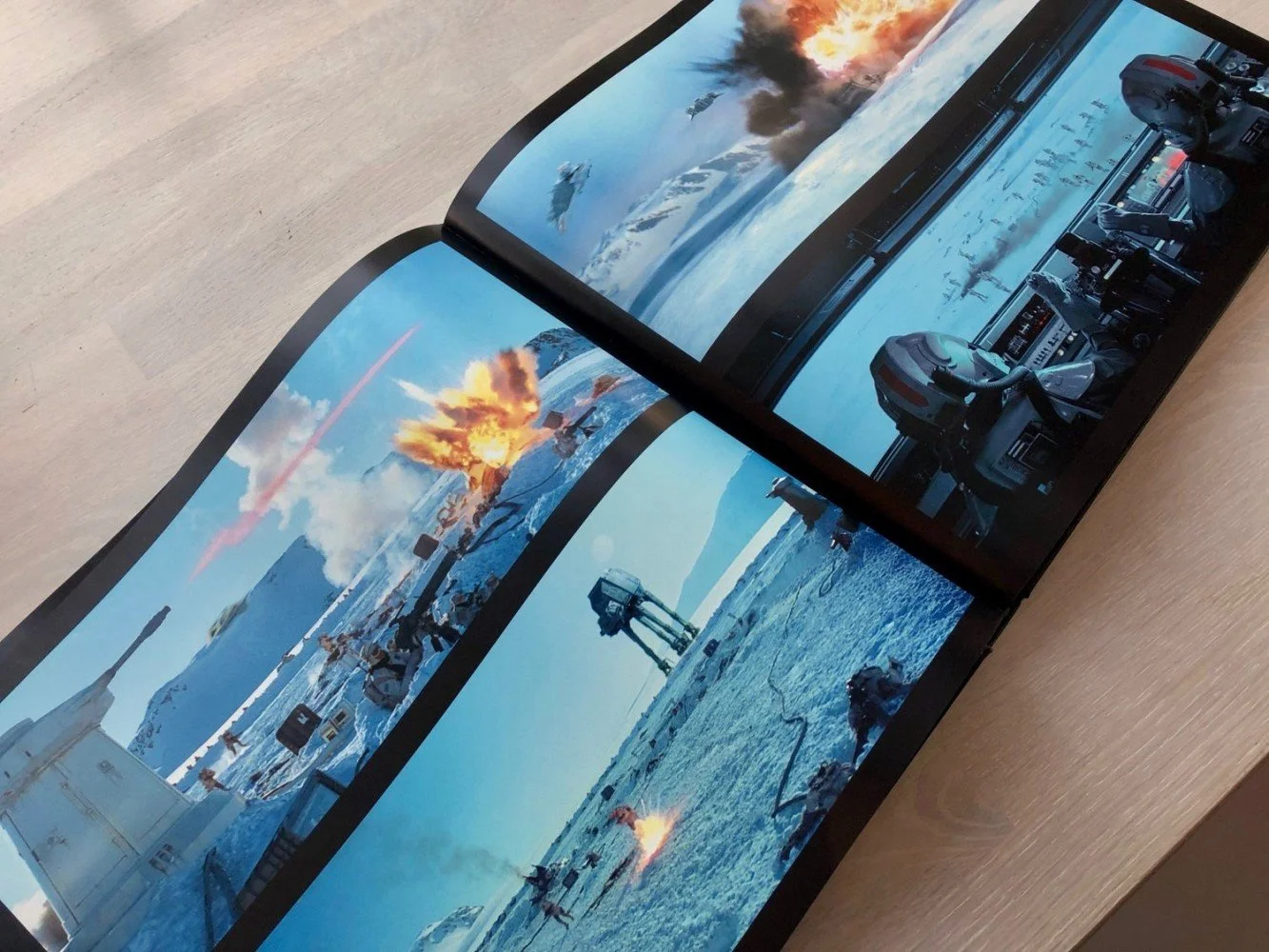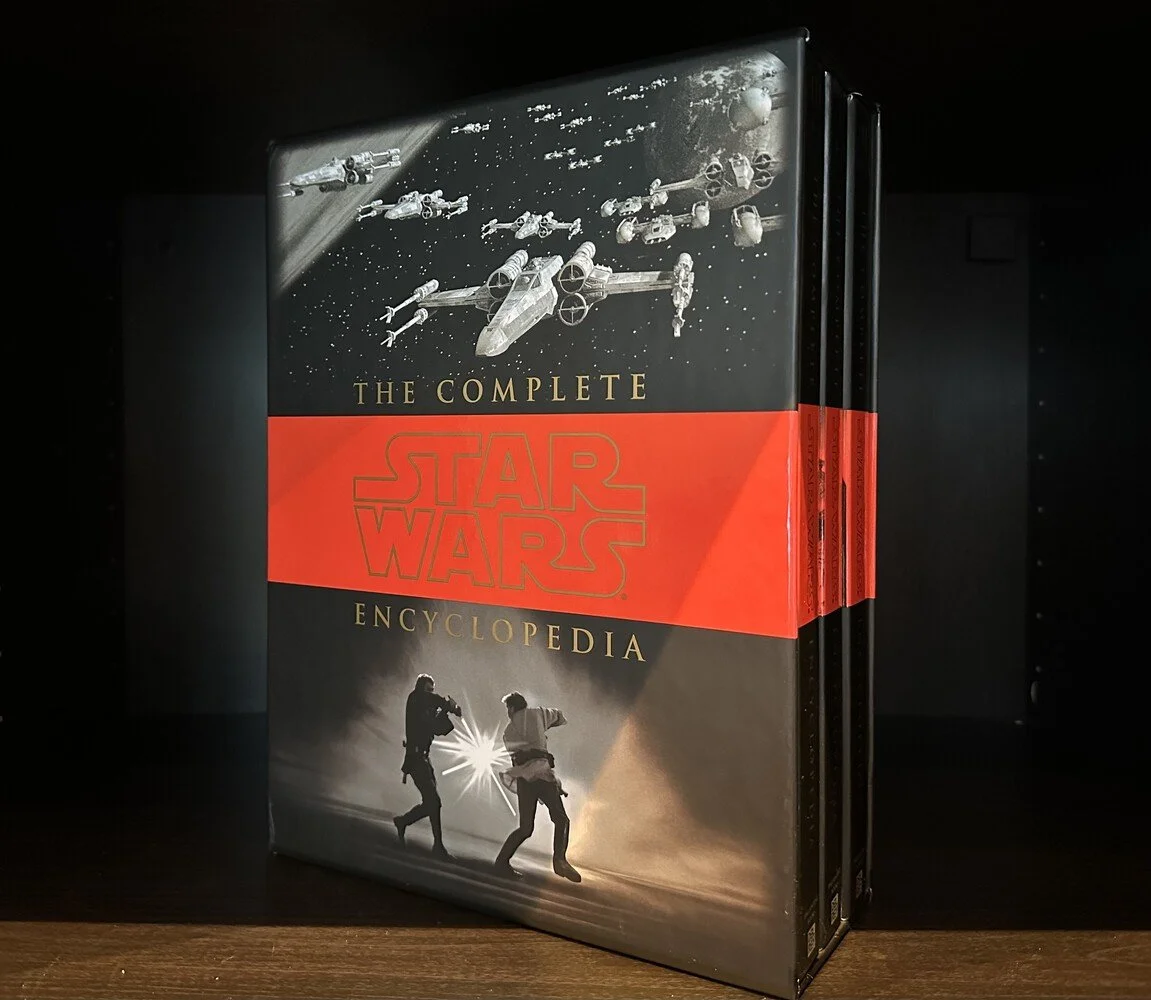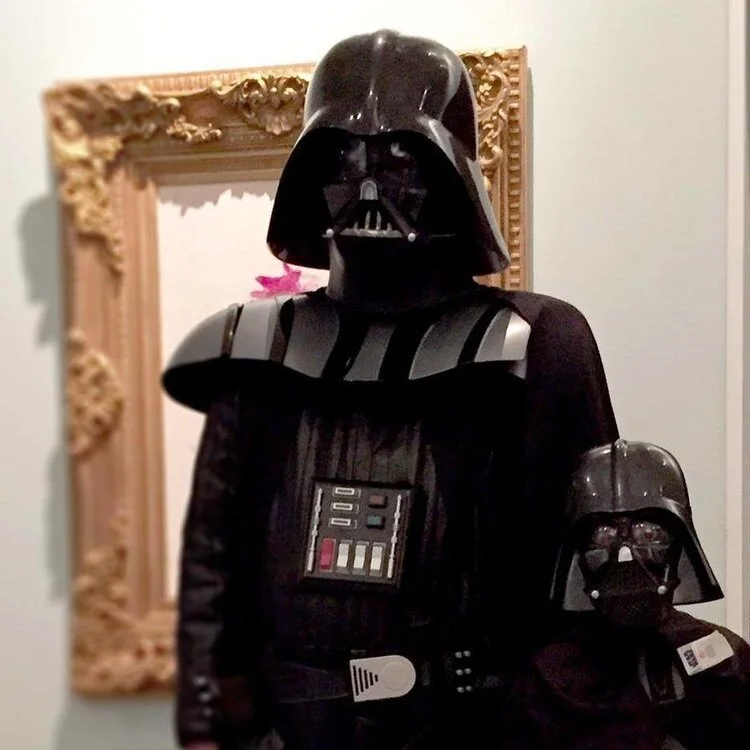A long time ago in a galaxy far, far away....
This time in my curated series of book lists, I've dedicated one to a piece of pop culture that holds a special place in my heart: the planet HOTH, as depicted in the Star Wars saga.
On March 5th, 1979, Lucasfilm started the filming of THE EMPIRE STRIKES BACK (probably your favorite Star Wars film) and chose the icy plains of Finse and the Hardangerjøkulen Glacier in Norway as the location needed to portray the frosty outback of the planet HOTH. They encountered the worst snowstorm in over 100 years during filming.
In this particular list, you will find a good overview of books that discuss or mention the filming of "The Empire Strikes Back" in Finse, Norway (and more from the galaxy).
The planet Hoth (Finse, Norway)
Quicklist
Stars and Wars by Alan Tomkins
Star Wars Memories by Craig Miller
Once upon a galaxy by Alan Arnold
Star Wars — The Blueprints by J.W. Rinzler
A Long Time Ago in a Cutting Room Far, Far Away by Paul Hirsch
The Making of Star Wars by J.W. Rinzler
The Making of The Empire Strikes Back by J.W. Rinzler
The Making of Star Wars: Return of the Jedi by J.W. Rinzler
The Star Wars Vault by Stephen J. Sansweet and Peter Vilmur
Star Wars Icons: Han Solo by Gina McIntyre
The Star Wars Archives. 1977–1983 by Paul Duncan
The Art of Drew Struzan by Drew Struzan and David J. Schow
The Empire Strikes Back Unauthorized Timeline: 1975-2020 by Justin Berger
The Galaxy Britain Built by David Whiteley
Industrial Light & Magic: The Art of Innovation by Pamela Glintenkamp
Star Wars: Frames by George Lucas
The Complete Star Wars Encyclopedia by Stephen J. Sansweet
The Star Wars Trilogy by George Lucas
How Star Wars Conquered the Universe by Chris Taylor
The Film Music of John Williams by Emilio Audissino
Stars and Wars: The Film Memoirs and Photographs of Alan Tomkins
In "Stars and Wars," Alan Tomkins delves deeper into his seminal work on the "Star Wars" series, particularly focusing on his contributions to "The Empire Strikes Back," filmed in part at Finse, Norway. Tomkins' memoir provides an in-depth look at the challenges of creating the film's iconic ice planet Hoth scenes in the harsh, remote landscapes of Finse. He recounts the logistical and technical hurdles faced by the production team in these extreme conditions, from constructing the Rebel Alliance's Echo Base to orchestrating large-scale battle scenes in the snow. Tomkins' narrative reveals the innovative techniques and creative solutions employed to bring these memorable moments to life, showcasing his pivotal role in shaping the visual direction of one of the most beloved sequels in the "Star Wars" saga. Through his stories, readers gain a deeper appreciation for the artistry and perseverance that underpin the making of these cinematic landmarks, illustrating Tomkins' lasting legacy in the realm of production design.
In memory of Alan Tomkins 1939-2020
Teodor Bjerrang and Alan Tomkins at Finse, Norway.
I had the pleasure of meeting Alan back in 2018 at Finse, where he talked about his time back in 1979 when he was working on Star Wars: Empire Strikes Back.
From Alans slide presentation. The Finse hotel during the filming of the Hoth scenes in 1979.
Star Wars Memories: My Time In The (Death Star) Trenches
by Craig Miller is a captivating memoir that offers an intimate glimpse into the making of the original "Star Wars" trilogy from the perspective of Miller, who served as the director of fan relations for Lucasfilm during its early years. Through a collection of personal anecdotes, behind-the-scenes insights, and rare stories, Miller shares his experiences working closely with George Lucas and the rest of the team, navigating the unprecedented fan frenzy, and contributing to the franchise's legacy. The book delves into the challenges of promoting the first film, the innovative strategies used to engage with fans, and the evolution of "Star Wars" into a cultural phenomenon. Miller's firsthand account provides a unique look at the inner workings of Lucasfilm and the creative genius behind one of the most iconic series in film history, making it a must-read for "Star Wars" enthusiasts and anyone interested in the magic of movie-making.
Photo of Craig presenting at Finse, Norway in 2017 by Teodor Bjerrang
Craig presenting his story at Finse, Norway back in 2017. Craig talked about his role as Director of Fan relations for Lucasfilm from 1977-1980 as he was there at the birthing of Star Wars publicity. A cursory glance at his IMDb will indicate how astonishing the list of fantastic movies that Craig has worked on, everything from Alien to Superman!
From the book Star Wars Memories: My Time In The (Death Star) Trenches
Once Upon a Galaxy: A Journal of the Making of The Empire Strikes Back
by Alan Arnold offers an in-depth diary-style account of the production of the second film in the original "Star Wars" trilogy. Written from Arnold's perspective as the unit publicist on set, the book provides a rare, behind-the-scenes look at the complexities and challenges faced by the cast and crew during the making of "The Empire Strikes Back." Arnold's observations cover everything from the technical difficulties of shooting in extreme locations like the snowy landscapes of Norway to the creative discussions between director Irvin Kershner and George Lucas. Through interviews, personal insights, and detailed descriptions of daily filming activities, Arnold captures the essence of what made the production of this iconic film both arduous and extraordinary.
From the book Once Upon a Galaxy: A Journal of the Making of The Empire Strikes Back
Star Wars — The Blueprints
by J.W. Rinzler offers an unprecedented look into the architectural and engineering marvels that underpin the Star Wars universe. This meticulously curated collection presents over 250 blueprints derived from the Lucasfilm Archives, detailing the intricate designs of iconic locations, vehicles, and spaceships from the Star Wars saga. Rinzler provides fascinating commentary and insights into the creative process behind these drawings, showcasing the innovative work of the artists and designers who brought George Lucas's visionary world to life. From the towering spires of the Jedi Temple to the complex workings of the Millennium Falcon, the book reveals the technical precision and imaginative breadth that contributed to the making of the films.
From the book Star Wars — The Blueprints
A Long Time Ago in a Cutting Room Far, Far Away
by Paul Hirsch is a memoir that offers a unique perspective on the making of the original "Star Wars" film through the lens of its Academy Award-winning editor. Hirsch, who also worked on other notable films, provides an engaging and insightful narrative that delves into the intricate process of film editing, revealing the challenges and creative decisions that shaped the iconic movie. His account spans the entire filmmaking process, from initial scripts to final cuts, highlighting his collaboration with director George Lucas and the innovative techniques used to bring the film's groundbreaking visual effects to life. Hirsch's memoir not only illuminates the technical aspects of editing but also captures the spirit of innovation and adventure that defined the creation of "Star Wars."
The Making of Star Wars: The Definitive Story Behind the Original Film
by J.W. Rinzler is an exhaustive and meticulously researched account of the creation of the first "Star Wars" movie, later retitled "Star Wars: Episode IV - A New Hope." This comprehensive book delves into every aspect of the film's development and production, from George Lucas's early concepts and the challenging scriptwriting process to the groundbreaking special effects and the movie's triumphant release. Rinzler compiles interviews with key figures, including Lucas himself, along with a wealth of behind-the-scenes photographs, concept art, and production documents. The book not only explores the technical innovations and filmmaking techniques that made "Star Wars" a cinematic revolution but also the personal struggles and triumphs of its creators.
The Making of The Empire Strikes Back: The Definitive Story Behind the Film
by J.W. Rinzler is an exhaustive account of the creation of the second film in the original Star Wars trilogy, delving into every facet of its production. From the initial screenplay development to the pioneering special effects and the formidable challenges of filming, particularly in the inhospitable terrains of Finse, Norway, for the Hoth battle scenes. Rinzler's book is rich with interviews from key figures like George Lucas and director Irvin Kershner, alongside numerous cast and crew members, offering a behind-the-scenes look filled with photographs, concept art, and personal anecdotes. The narrative vividly recounts the crew's struggles against extreme weather and logistical hurdles in Norway, illustrating the blend of creativity, determination, and teamwork that was essential to bringing the icy planet Hoth to life.
The Making of Star Wars: Return of the Jedi
by J.W. Rinzler offers an exhaustive behind-the-scenes look at the production of the final installment in the original Star Wars trilogy. Through detailed accounts, the book covers the creative and technical challenges faced during the making of the film, from initial concept and script development to the complexities of shooting and post-production. Rinzler compiles extensive interviews with the filmmakers, including George Lucas, director Richard Marquand, and key cast and crew members, providing insight into the creative decisions and innovations that shaped the movie. The book is richly illustrated with sketches, storyboards, and photographs, capturing the intricate details of the film's special effects, costume design, and iconic set pieces.
The Star Wars Vault: Thirty Years of Treasures from the Lucasfilm Archives
by Stephen J. Sansweet and Peter Vilmur is a treasure trove for Star Wars enthusiasts, offering a comprehensive and interactive exploration of the franchise's first three decades. This lavishly illustrated book delves into the Lucasfilm Archives, presenting rare and fascinating memorabilia, including reproductions of script pages, design sketches, promotional materials, and more. Each page is a journey through the rich history of Star Wars, from its inception and early drafts to the making of the movies and their cultural impact. Sansweet and Vilmur provide insightful commentary that guides readers through the development and evolution of the Star Wars universe, including anecdotes from the creators and artists who brought George Lucas's vision to life. The inclusion of removable documents and multimedia elements makes this volume an immersive experience, allowing fans to engage directly with the artifacts that have made Star Wars an enduring legacy in cinematic history.
From the book The Star Wars Vault: Thirty Years of Treasures from the Lucasfilm Archives
Star Wars Icons: Han Solo
by Gina McIntyre dives deep into the legacy of one of the most beloved characters in the Star Wars saga, Han Solo. This detailed biography traces the iconic smuggler's journey from his origins in the mind of George Lucas to his portrayal by Harrison Ford in the original trilogy and beyond, including his role in the sequel trilogy and the standalone film "Solo: A Star Wars Story." McIntyre combines a rich array of interviews, behind-the-scenes insights, and film analysis to explore the development and evolution of the character. The book is packed with rare photographs, concept art, and memorabilia, showcasing the creative process behind Han Solo's character and his impact on pop culture.
From the book Star Wars Icons: Han Solo
The Star Wars Archives. 1977–1983
by Paul Duncan is a comprehensive exploration of the original Star Wars trilogy, offering an unparalleled look into the films' creation. Duncan's meticulous research brings to light the innovative filmmaking techniques, the development of iconic characters, and the storytelling vision that propelled Star Wars into cinematic history. His work includes detailed accounts from George Lucas and insights into the making of "The Empire Strikes Back," highlighting its darker tone, complex narrative, and the expansion of the Star Wars mythology. Special attention is paid to the filming challenges in Norway, the puppetry of Yoda, and the creation of Bespin's Cloud City. Featuring exclusive interviews, concept art, storyboards, and stills, the book not only uncovers the technical and creative hurdles overcome in the trilogy's production but also celebrates its enduring impact.
From the book The Star Wars Archives. 1977–1983
The Art of Drew Struzan
By Drew Struzan showcases the work of one of the most iconic movie poster artists of the modern era, offering a comprehensive look at his illustrious career. Co-authored with David J. Schow, the book provides a behind-the-scenes journey through Struzan's creative process, featuring a vast collection of his most famous works, including posters for the Indiana Jones series, Back to the Future, Star Wars, and many more. Struzan shares insights into the artistry behind his poster designs, from initial sketches to finished pieces, revealing the challenges and triumphs of his craft. The book also includes never-before-seen projects and commentary that shed light on Struzan's unique ability to capture the essence of a movie in a single image. "The Art of Drew Struzan" is not only a tribute to his contribution to film and pop culture but also an inspirational guide for artists and designers, filled with the beauty and drama of cinematic art.
Teodor Bjerrang and Drew Struzan at Silicon Valley Comic Con, San Jose in 2017
The Empire Strikes Back Unauthorized Timeline: 1975-2020
by Justin Berger offers a comprehensive chronology of the beloved second installment of the original Star Wars trilogy from its conception through four decades of its legacy. Berger meticulously documents the film's development, production details, and its enduring impact on popular culture. The book delves into the initial story ideas, casting decisions, groundbreaking special effects, and the challenges faced by the filmmakers. It also explores the film's critical and commercial reception, its place within the broader Star Wars saga, and the various ways it has been celebrated and reinterpreted by fans over the years. Through a collection of facts, anecdotes, and analysis, Berger presents a detailed account that appeals to both hardcore fans and newcomers, highlighting why "The Empire Strikes Back" remains a seminal work in film history.
The Galaxy Britain Built
by David Whiteley celebrates the unsung British talent behind the original Star Wars trilogy, shining a light on their indispensable contributions to the iconic series. Whiteley delves into the stories of the skilled craftsmen, technicians, designers, and actors from the UK who played pivotal roles in bringing George Lucas's visionary world to life. From the construction of the Millennium Falcon to the creation of the series' legendary costumes and sets, the book uncovers how Britain's innovative spirit and expertise were crucial to the trilogy's success. Through interviews and personal anecdotes, Whiteley offers a unique perspective on the saga's production, revealing the challenges and triumphs of the British teams whose creativity and hard work helped shape the Star Wars universe.
Industrial Light & Magic: The Art of Innovation
by Pamela Glintenkamp is a riveting account that chronicles the transformative journey of Industrial Light & Magic (ILM), from its inception to becoming the pioneering force in the visual effects industry. Through compelling illustrations, exclusive behind-the-scenes photographs, and insightful interviews, Glintenkamp celebrates ILM's groundbreaking contributions to cinema, highlighting the innovative techniques and technological advancements that have set new benchmarks in filmmaking. The book also touches upon the ILM's instrumental role in "Star Wars: The Empire Strikes Back," detailing how the team's ingenuity led to major breakthroughs in motion control photography, and the complex puppetry of Yoda.
Star Wars: Frames
by George Lucas is a unique visual homage to the Star Wars saga, hand-selected by Lucas himself. This exquisite collection features hundreds of meticulously chosen frames from all six Star Wars films, offering a strikingly different perspective on the iconic series. Each frame is chosen for its artistic and narrative significance, providing fans and cinephiles with an intimate look at the cinematic artistry that defines the Star Wars universe. The book delves into the visual core of Lucas's creation, highlighting the meticulous composition, innovative visual storytelling, and unparalleled imagination that have made the series a cornerstone of modern cinema.
From the book Star Wars: Frames
The Complete Star Wars Encyclopedia
by Stephen J. Sansweet is an extensive and authoritative reference guide that covers the vast universe of the Star Wars saga. This comprehensive tome is meticulously organized and filled with detailed information about characters, planets, vehicles, battles, and lore from the Star Wars films, TV series, novels, comics, and video games. Spanning multiple volumes, the encyclopedia delves into the minutiae of the Star Wars galaxy, providing fans with in-depth analyses, descriptions, and historical insights. Sansweet's work is both a scholarly resource and a tribute to the Star Wars legacy, offering an indispensable tool for both casual fans and die-hard enthusiasts seeking to navigate the complexities of the Star Wars universe.
The Star Wars Trilogy
by George Lucas encapsulates the original epic saga that introduced audiences to the galaxy far, far away. This collection brings together the novelizations of the first three Star Wars films: "A New Hope," "The Empire Strikes Back," and "Return of the Jedi." Through these narratives, readers are given a deeper insight into the journey of Luke Skywalker from farm boy to Jedi Knight, the conflict between the Rebel Alliance and the Galactic Empire, and the struggle of characters like Princess Leia, Han Solo, and Darth Vader. Enhanced by Lucas's vision, the trilogy expands on the films' plots, offering additional background, thoughts, and motivations of characters, and further exploring the richly detailed universe of Star Wars.
How Star Wars Conquered the Universe
by Chris Taylor is a comprehensive exploration of the Star Wars franchise's monumental impact on culture, technology, and entertainment. Taylor delves into the origins of George Lucas's epic saga, tracing its rise from a risky studio gamble to a global phenomenon that has influenced movies, merchandise, and media for decades. Through extensive research and interviews, the book examines not just the films' creation and the industry they spawned but also their profound effect on fans and their role in shaping the modern cinematic landscape. Taylor's narrative is filled with fascinating anecdotes, insights into the fandom, and analyses of how Star Wars continues to captivate and inspire generations.
The Film Music of John Williams: Reviving Hollywood's Classical Style
by Emilio Audissino delves into the pivotal role John Williams played in rejuvenating the classical music style within modern Hollywood cinema. Audissino provides an in-depth analysis of Williams's career and his contributions to film music, illustrating how his compositions for iconic movies such as "Star Wars," "Jaws," and "Indiana Jones" have left an indelible mark on the industry. The book explores Williams's technique of blending traditional orchestration with contemporary film narratives, thereby creating soundtracks that are both timeless and emotionally compelling. Through a combination of musical and cinematic analysis, Audissino celebrates Williams's ability to connect with audiences worldwide, arguing that his work has significantly shaped the way we experience film. "The Film Music of John Williams" is not only a tribute to Williams's genius but also a comprehensive study of how his classical style has revitalized the soundtrack genre in Hollywood.
The Han Solo rock at Finse
Sometimes embracing the Dark Side with the kids!
